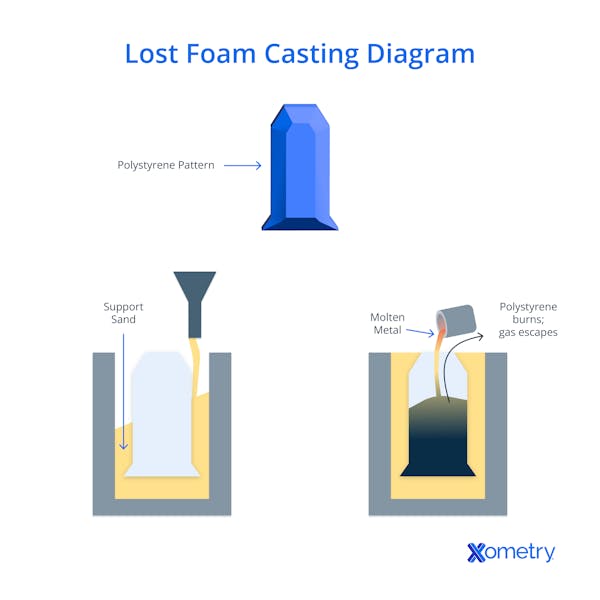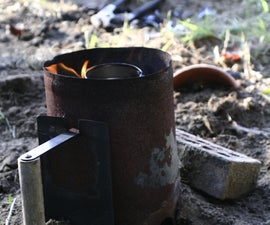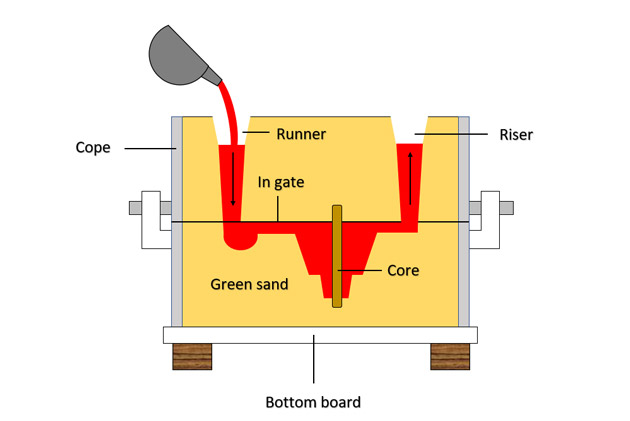A Comprehensive Overview to the Methods Utilized in Aluminum Foundry Operations
Aluminum Foundry procedures utilize various casting strategies, each with distinct procedures and applications. Understanding these approaches is vital for optimizing manufacturing and attaining preferred product buildings. From sand spreading to pass away casting, the choices readily available can significantly affect effectiveness and price. As innovation advancements, so as well do these techniques, prompting a more detailed examination of their constraints and advantages. The effects of these advancements warrant further expedition.
Summary of Aluminum Casting Techniques
Aluminum casting techniques include a range of approaches made use of to shape liquified Aluminum into desired forms. These techniques are pivotal in the manufacturing and engineering markets, using versatility and performance. Major techniques include pass away casting, which uses high-pressure to inject Aluminum into mold and mildews for precision parts, and gravity casting, where molten Aluminum is poured right into molds drunk of gravity, permitting bigger, less complicated shapes. Financial investment casting, another approach, entails creating a wax pattern covered in ceramic, providing high dimensional precision for intricate designs. In addition, long-term mold and mildew casting uses recyclable molds, improving manufacturing efficiency and minimizing waste. Each method caters to certain applications, stabilizing factors such as expense, manufacturing volume, and product homes. As industries progress, advancements in these casting approaches continue to enhance the top quality and performance of Aluminum components, positioning them as important procedures within modern-day production.
Sand Spreading: Refine and Applications
Sand casting is a commonly utilized approach in the Foundry sector, understood for its simpleness and flexibility. Aluminum Foundry. This procedure entails developing a mold from a blend of sand and a bonding representative, commonly clay. The mold and mildew is created around a pattern, which is a replica of the preferred final product. Once the mold is prepared, molten Aluminum is poured into the cavity, allowing it to solidify into the preferred shape
One of the primary advantages of sand casting is its capacity to produce complex geometries and huge parts, making it appropriate for different applications, consisting of vehicle components, machinery components, and decorative things. Additionally, sand spreading can suit different Aluminum alloys, enhancing its adaptability. The process is affordable for low to tool manufacturing runs, as it does not require costly tooling. Generally, sand spreading continues to be a fundamental method in Aluminum Foundry operations due to its effectiveness in conference diverse manufacturing needs.
Die Casting: Advantages and Limitations
While die spreading is commonly compared to sand spreading, it supplies unique benefits and limitations that make it appropriate for particular applications in the Aluminum Foundry industry. One substantial benefit of die casting is its capacity to create complex forms with high dimensional precision and superb surface coating. This process is particularly advantageous for mass production, as it enables faster cycle times and decreased labor prices. Additionally, die casting lessens material waste, boosting overall effectiveness.
However, pass away casting additionally has restrictions. The preliminary tooling expenses are relatively high, making it much less feasible for little manufacturing runs. The procedure is ideal matched for metals with reduced melting factors, which can restrict material choices. Pass away spreading is also restricted regarding the maximum size of the parts generated, as bigger components may require different methods. Balancing these aspects is important for figuring out the suitable application of die casting in the Aluminum Foundry field.
Financial Investment Spreading: Precision and Detail
Financial investment casting is an extremely exact production procedure that enables for intricate designs and fine details in Aluminum components. This strategy offers significant advantages, including improved dimensional precision and reduced machining requirements. Its applications span various industries, highlighting its versatility and efficiency in creating complicated parts.
Process Review
The investment casting procedure is renowned for its capacity to generate high-precision elements and elaborate shapes. This method starts with developing a wax pattern, which is after that coated with a ceramic shell. As soon as the shell solidifies, the wax is melted away, leaving an exact tooth cavity for the molten metal. The Aluminum is poured into this dental caries, recording the great details of the initial pattern. After cooling down, the ceramic shell is escaped, revealing the actors part. Any kind of needed completing work, such as machining or surface area treatment, is done to attain the wanted specs. This process is specifically helpful for complicated geometries that are hard to achieve through conventional casting techniques, ensuring both quality and precision in the end product.
Advantages of Accuracy
Accuracy in financial investment casting uses substantial advantages, making it a preferred selection for producing intricate components. This strategy allows the manufacturing of complex forms with tight tolerances, reducing the demand for substantial machining and lessening product waste. The capability to attain high dimensional precision equates to a superior fit and finish, improving the total high quality of the end product. Additionally, investment spreading permits the incorporation of fine information, which is vital for elements calling for detailed layouts. The process also supports making use of various Aluminum alloys, further expanding its applicability. Generally, the precision supplied by financial investment spreading not only boosts the practical and visual qualities of elements but likewise adds to improved performance in production cycles.
Applications in Market
While several manufacturing procedures exist, investment casting sticks out for its convenience throughout various markets, particularly in industries requiring high accuracy and detailed components. This spreading approach is widely made use of in aerospace, vehicle, and clinical areas, where detailed styles and limited resistances are crucial. Aerospace elements profit from financial investment spreading's ability to generate complicated geometries that decrease weight without compromising architectural integrity. The automobile market employs this method to produce engine components that require toughness and accuracy. In the clinical market, financial investment spreading allows the manufacturing of medical tools and implants that need to satisfy rigid top quality requirements. On the whole, financial investment casting significantly enhances item performance and integrity, making it an invaluable method in modern-day production applications.
Contrast of Casting Methods
 The contrast of casting approaches discloses distinct benefits and applications throughout numerous strategies - Aluminum Foundry. Sand spreading is commonly commemorated for its versatility and cost-effectiveness, while die casting is recognized for its effectiveness and precision in producing high quantities. Investment spreading, formerly gone over, showcases its distinct ability to produce complex styles, further highlighting the varied abilities of each technique in Aluminum Foundry procedures
The contrast of casting approaches discloses distinct benefits and applications throughout numerous strategies - Aluminum Foundry. Sand spreading is commonly commemorated for its versatility and cost-effectiveness, while die casting is recognized for its effectiveness and precision in producing high quantities. Investment spreading, formerly gone over, showcases its distinct ability to produce complex styles, further highlighting the varied abilities of each technique in Aluminum Foundry proceduresSand Spreading Advantages
Sand spreading uses a number of benefits when contrasted to various other casting methods, making it a favored option in various manufacturing applications. Among the key benefits is its reduced price, as the products required, such as sand and metal, are readily available and affordable. Furthermore, sand spreading permits better layout adaptability, enabling the manufacturing of intricate forms and huge parts that might be testing to accomplish with various other strategies. The procedure additionally suits a variety of steel alloys, consisting of Aluminum, boosting its convenience. Additionally, sand mold and mildews can be easily fixed or useful site changed for succeeding casts, making it effective for both tiny and big manufacturing runs. In general, these advantages add to sand spreading's popularity in the Foundry industry.
Pass Away Casting Techniques
Die spreading strategies attract attention as an extremely effective method for generating steel parts, particularly when contrasted to standard casting approaches like sand spreading. This process involves compeling molten Aluminum right into a mold and mildew under high pressure, causing exact dimensions and a smooth surface area finish. Unlike sand spreading, which needs extensive ending up work, pass away casting reduces post-production processing, boosting general performance. Furthermore, die spreading can accommodate intricate geometries, enabling detailed visit this site styles that would certainly be challenging to attain with various other techniques. The rate of production is another advantage; pass away casting can create large quantities of parts in a shorter duration. In general, the mix of layout, efficiency, and accuracy flexibility makes pass away casting a favored selection in modern-day Aluminum Foundry procedures.
Financial Investment Casting Applications
Financial investment casting, commonly described as lost-wax spreading, offers distinct advantages over other casting methods, particularly relative to precision and surface finish. This method enables the creation of elaborate shapes and fine details that are challenging to achieve with sand or pass away casting. In addition, financial investment casting generates elements with premium dimensional precision, reducing the requirement for considerable machining. Its flexibility makes it appropriate for numerous markets, consisting of aerospace, vehicle, and clinical gadgets, where top notch elements are vital. Compared to pass away casting, which can be restricted by mold intricacy, investment casting masters producing complicated geometries without compromising architectural honesty. The selection of investment casting becomes increasingly positive for applications requiring high performance and integrity.
Quality Assurance in Aluminum Foundry Workflow
Just how can Aluminum shops guarantee the finest quality in their items? Carrying out strenuous quality assurance measures is crucial. Shops usually begin by developing clear specifications for the Aluminum alloys made use of, guaranteeing they fulfill market criteria. Constant surveillance during the melting and putting procedures assists recognize any type of deviations from preferred chemical make-ups.
In addition, aesthetic assessments and non-destructive screening techniques, such as ultrasonic or X-ray assessments, are commonly used to find internal defects or variances in castings. Furthermore, analytical process control strategies track production data, permitting very early recognition of possible concerns.
Normal training and certification of workers in top quality assurance techniques are essential for maintaining high standards. Applying responses loopholes from consumers can assist factories fine-tune their processes and improve product high quality. By sticking to these techniques, Aluminum shops can continually supply top quality products that go beyond or satisfy client expectations.
Future Trends in Aluminum Spreading Technology
Advancements in Aluminum spreading modern technology are positioned to reshape the industry landscape, structure upon well established quality assurance methods. Innovations such as additive production and clever Foundry services are emerging, making it possible for boosted style flexibility and reduced waste. The combination of expert system and machine understanding in procedure tracking enables real-time changes, enhancing efficiency and item high quality.
Sustainability remains an essential focus, with a focus on recycling scrap Aluminum and reducing power consumption. Advanced alloy formulas are being developed to maximize performance while decreasing ecological impact. The adoption of automated systems, consisting of robotics for managing and pouring, assures to enhance office security and accuracy.
Additionally, electronic twins are getting traction, permitting virtual simulations that assist in far better decision-making and predictive maintenance. As these trends develop, they will likely develop a much more efficient, sustainable, and highly advanced Aluminum casting market, establishing brand-new standards for top quality and efficiency.
Regularly Asked Concerns
What Precaution Should Be Taken in Aluminum Foundry Workflow?
In Aluminum Foundry procedures, essential security steps consist of individual protective devices, correct ventilation, routine training, hazard assessments, emergency preparedness, and adherence to protocols to alleviate dangers related to liquified metal and hefty equipment.
Just How Is Recycled Aluminum Made Use Of in Foundry Processes?
Recycled Aluminum is typically used in Foundry procedures to reduce environmental impact and production costs. It undergoes melting and refining, allowing suppliers to develop top quality products while conserving energy and lessening waste in the Aluminum lifecycle.
What Tools Is Important for Aluminum Casting?
Important devices for Aluminum casting includes heaters for melting, mold and mildews for shaping, putting ladles, cooling down systems, and completing tools. Each component plays a critical duty in guaranteeing the effectiveness and top quality of the casting procedure.
Just How Do Environmental Regulations Impact Aluminum Foundries?
Ecological policies significantly impact Aluminum foundries by enforcing limitations on emissions and waste administration. Compliance requires financial investment in cleaner innovations, which can enhance operational costs but ultimately advertises sustainability and decreases the environmental impact of the market.

What Are Typical Problems in Aluminum Castings and Their Solutions?
Usual problems in Aluminum castings consist of surface area, shrinking, and porosity blemishes. Solutions include optimizing thaw quality, managing air conditioning rates, and utilizing appropriate mold style, making sure far better stability and efficiency of the last cast items.
 Significant strategies include die casting, which utilizes high-pressure to infuse Aluminum right into mold and mildews for precision parts, and gravity casting, where molten Aluminum is poured into molds under the influence of gravity, enabling for bigger, much less intricate forms. While die spreading is usually compared to sand casting, it offers unique advantages and restrictions that make it appropriate for details applications in the Aluminum Foundry industry. Sand casting Go Here is commonly commemorated for its adaptability and cost-effectiveness, while die spreading is identified for its effectiveness and accuracy in creating high volumes. Die casting methods stand out as a very efficient method for producing steel components, specifically when contrasted to standard spreading techniques like sand casting. Compared to die spreading, which can be restricted by mold and mildew intricacy, investment casting excels in producing intricate geometries without endangering architectural stability.
Significant strategies include die casting, which utilizes high-pressure to infuse Aluminum right into mold and mildews for precision parts, and gravity casting, where molten Aluminum is poured into molds under the influence of gravity, enabling for bigger, much less intricate forms. While die spreading is usually compared to sand casting, it offers unique advantages and restrictions that make it appropriate for details applications in the Aluminum Foundry industry. Sand casting Go Here is commonly commemorated for its adaptability and cost-effectiveness, while die spreading is identified for its effectiveness and accuracy in creating high volumes. Die casting methods stand out as a very efficient method for producing steel components, specifically when contrasted to standard spreading techniques like sand casting. Compared to die spreading, which can be restricted by mold and mildew intricacy, investment casting excels in producing intricate geometries without endangering architectural stability.